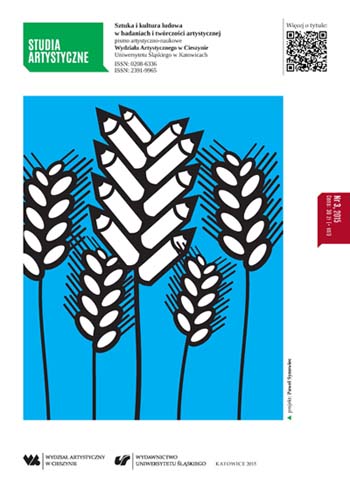Drewno a sprawa polska. Wykorzystanie drewna w poszukiwaniu polskiego stylu narodowego
Wood and a Polish issue. The use of wood in search of Polish national style
Author(s): Aleksandra Giełdoń-PaszekSubject(s): Fine Arts / Performing Arts, Customs / Folklore, Visual Arts
Published by: Wydawnictwo Uniwersytetu Śląskiego
Keywords: wood; Zakopane Style; the search for a national style; Rytm; School of Wood Industry
Summary/Abstract: Wood has been used since the dawn of time as sculpture and building material, however it gained appreciation as raw material in the 19th century, when interest in folklore and crafts, as well as the need to define national identity through art intensified. The most spectacular example of combining all these ideas was the Zakopane style created by Stanisław Witkiewicz on the basis of the folk art of The Podhale (Polish Highlands). Witkiewicz was convinced that true features of Polish art uncorrupted by civilization survived in the art of Zakopane. The popularity of the Zakopane style reached its peak at the turn of the 19th and 20th century.In the interwar period, in a reborn Poland, some motifs of highlanders carpentry and woodcarving art reappeared in the creations of the artists associated with Rytm (Rhytm). Polish pavilion at the exhibition in Paris in 1925 was a spectacular example of this. Decorative Art, which was popularized by Rytm, was a combination of classical, post-cubist and Sarmatian elements drawn from folk art, especially from the Podhale. It was considered national art, defining the nature of the Second People’s Republic of Poland.Once again wood was interpreted as an ancient Polish material by critics carrying out the evaluation of Polish post-war wood sculpture. Its creators most often came from the Zakopane School of Wood Industry, which was transformed into a high school of art after the war. Witkiewicz traditions, teachings of Karol Stryjeński associated with Rytm, and of the charismatic teacher, Antoni Kenar – after the war, made the school an important element of Polish culture related to the Podhale, wood and the idea of national art.
Journal: Studia Artystyczne
- Issue Year: 2015
- Issue No: 3
- Page Range: 131-138
- Page Count: 8
- Language: Polish

